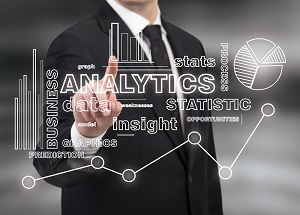Retail and CPG brands face an incredibly complex sales and marketing landscape, with channels ranging from traditional brick and mortar stores to e-commerce – and the latter growing fast. Every day more consumers turn to eCommerce channels to purchase their products or at least to capture other consumers’ opinions before going to a store – 94% of users today read reviews before deciding to buy.
As a consequence, data is being generated at an incredible speed and its importance is growing. Although getting access to what consumers are saying is not that hard anymore, finding the time to read, analyze, understand, and categorize that data is almost impossible – especially when companies try to do that with content from multiple data sources. That’s exactly where text analytics comes in.
What is Text Analytics and why you should care about it
Text Analytics is the process of interpreting and categorizing content, extracting context out of words. This process involves the automatic extraction and classification of written information according to relevant aspects of a specific situation. It can be applied to several different areas, from contracts to sales and marketing, and some of the traditional types of text analysis include sentiment analysis and keywords or topic detection.
In a Consumer Insights context, Text Analytics can be applied to any consumer data, from consumer-generated content like product reviews and conversations to content that relates to consumers, whether it’s something about them or something that influences them – like expert reviews and blog posts. From there, a company can discover patterns that highlight behaviors and attributes or predict trends.
This type of analysis can be performed manually as long as a process is established, but it becomes extremely complicated to do it when larger subsets of data are included, especially from different structures and types. Taking the time to look at each text in detail and relating it to the context until finding patterns becomes inefficient and prone to errors. Therefore, Text Analytics as it’s known today has become key – considering that 2.5 quintillion bytes are generated every day – to extract meaning from content in a scalable way, using text mining and NLP – Natural Language Processing to find context in huge amounts of text.
Companies who do not leverage Text Analytics in their Customer Experience and Consumer Insights processes will leave untapped data on the side, missing relevant insights not only about what their current customers think about them but also about how it is impacting other consumers. They will also miss the chance to discover what they could do differently to mitigate future problems and to potentialize the good aspects of the brand while reducing the impact of the bad aspects.
How to choose the right Text Analytics tool – and get the best out of it
There are several text analytics tools and it is important to know how to differentiate one from another considering your use case. Many of the analytics tools available in the market are general-purpose tools that must be configured appropriately to give you the information and the granularity you want. So the first thing you should consider is what are your goals with Text Analytics and what specific insights and patterns you expect to find out.
To keep the example within the Consumer Insights space, let’s consider you want to structure data from consumer opinions (written in natural language) that come from different sources. There are some important things you need to know before choosing the correct tool, such as:
1. It’s out of the box ability to extract metadata from the opinions
Extracting keywords out of conversations is the basic feature of a Text Analytics tool. Connecting each of these keywords to relevant business aspects that make sense to your company’s reality is a bit more complicated. Although some tools can still deliver some relevant metadata using queries and topics, there is still a lot of manual work left to do in order to relate them to your business. And that’s when having this ability out of the box can be crucial to save you time and ensure you get value out of the tool.
What is it about
What is the opinion about? Is it the whole company, a specific product, a place, an experience, or a service? That is important because your analysis must be segmented enough to give you the ability to filter those opinions that are not your focus right now. Wrong segmentations might give you wrong information, conclusion and actions.
If you want to know about aspects related to a product, for instance, granular product segmentation is important to you in order to know exactly to which product (or series/model) the consumer is given his/her opinion. You might consider tools that enable you to extract information such as:
- Product category (Smartphones, Televisions, Refrigerators, Beverages, Cleaning Wipes, …)
- Product brand (Samsung, Dove, LG, Clorox, …)
- Product main specs (Screen size, OLED, size, formula, package …)
- Product series and models
Other important metadata
Several other metadata can be used to segment, filter, classify and finally better narrow your analysis. Think about your business needs and what kind of information more you might consider. These are some ideas:
- The source type (e-commerce, forum, social media, …)
- The date when the opinion was posted
- The language was written
- The estimated gender of the consumer who posted the opinion
- The geolocation (when available) of the consumer who posted the opinion
- Is the opinion syndicated (replicated among other sources)?
2. It’s the ability to extract granular, structured details about the opinion
Most Text Analytics tools can extract important (frequent, trending, and so on) keywords and sentiments from the whole sentence. But this is just the very beginning. You might consider configuring the text analytics tools to a more granular level. Have a look at this way of doing:
- First, you must consider different types of domain-specific words (aspects) to be searched and extracted from the opinion, such as:
- Attributes (I love how the compartments of this refrigerator were designed.)
- Jobs (This washer was the only one capable of removing cat hair from my clothes.)
- Personas (I bought this toy for my grandchildren but he does not like it.)
- We generally call all of these domain-specific words as ASPECTS of an opinion. You can then consider the traditional frequent, trending, and other measures over the aspects to have a better understanding of the opinion, eliminating most of the trash words that come with the general keyword approach.
- Second, you should analyze sentiment on aspect-level against whole sentence sentiment. Well, you know in a granular way what the consumer is talking about with the aspect approach. But what judgment they are doing about each extract aspect specifically. If you want such a granular level, you need a tool that comes with an advanced level of aspect-based sentiment analysis. With this ability, for the examples above, the tool should be able to predict the following sentiments for each aspect:
- compartments = positive
- removing cat hair = positive
- grandchildren = negative
- Third – and you can ignore this part if you want just to analyze a dozen specific aspects, but most of the time that is not the case. A unique product category might have thousands of different aspects that were evaluated by the consumers. Even though they are much better than the traditional keyword approach, there might be still too much information for a human to analyze. Organizing these aspects in an explorable way is an important task to make a faster and effective analysis for your business. We suggest that you build a domain-specific taxonomy to organize all the fine-grain aspects and their sentiments. The taxonomy must group synthetic different (but with the same/similar meaning) words such as:
- cost, price, pricing, cheap, expensive – all of them are talking about price
- grandchildren, grandson, granddaughter, grandchild
- screen, display
- A taxonomy is a hierarchical way of organizing things, so you could also merge different groups of aspects and have, in the end, just a dozen of high-level groups to analyze that you ideally can deep dive into detail whenever you want.
About the Author

Patrícia Osorio, Co-Founder & CMO, Birdie has more than 10 years of experience in marketing and business development. After graduating in both Law and BA in the top Universities in Latin America, she joined Arizona in 2007 to lead product marketing and business development and soon became a partner. She also co-founded HomeRefill, an online subscription e-commerce, and GVAngels, an angel investment group that is a pioneer and leader in Brazil. Pat is a growth hacker who graduated by Growth Tribe (Europe) and has experience with B2B Growth and Acquisition in Brazil and the USA. Together with CEO Alex Hadade, she saw the opportunity to use product data for insights and drafted the first version of Birdie in late 2017.
Sign up for the free insideBIGDATA newsletter.





Speak Your Mind